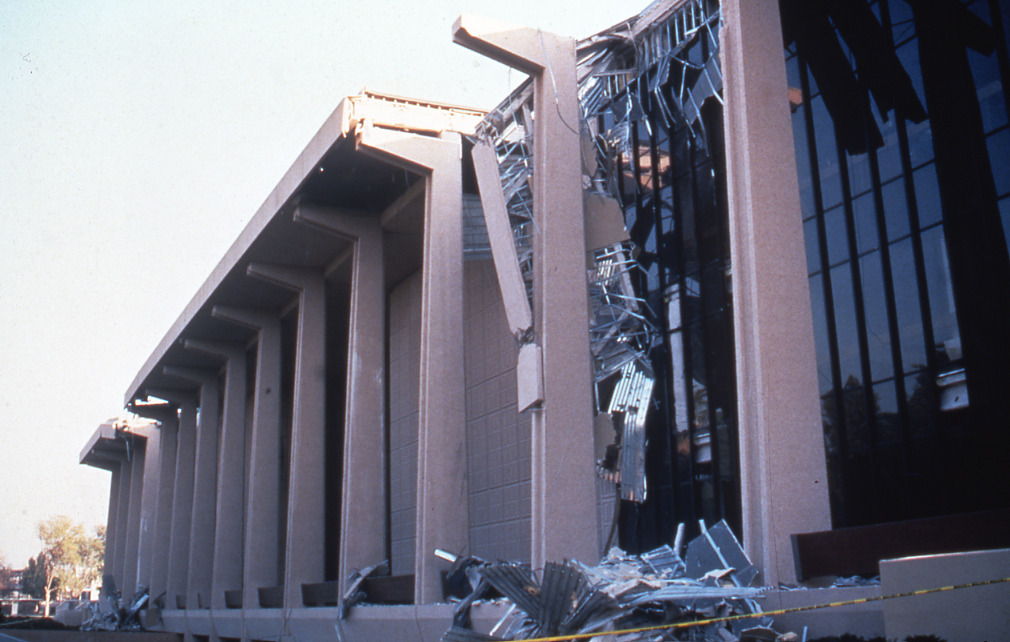
Media Contact: Matthew Bragulla, matthew.bragulla.004@my.csun.edu, or Javier Rojas, javier.rojas@csun.edu
Southern California has seen a lot of natural phenomena recently — from enormous wildfires and high-speed winds to massive rainfall and landslides — and most recently, a series of small to moderate earthquakes.
Westlake Village shook early last month on March 9, clocking in a 4.1 quake that sent aftershocks to surrounding areas and stirring up conversation about possible relation to all the other natural disasters occurring.
California State University, Northridge Associate Professor of Geological Sciences Julian Lozos assures us that earthquakes have absolutely zero connection to the other natural events.
“The very short answer is that the earthquakes are not related to the other stuff,” Lozos said. “The earthquake process is totally unrelated to weather and climate. In general, they are controlled by stuff happening miles and miles below the surface.”
Lozos said what happened in March is normal earthquake behavior for California.
“If you were to look at any other year, you would probably find that there was a time in that year where we were like ‘oh, we felt a few earthquakes within a few weeks of each other,’ and everybody wondered about it,” Lozos said. “But then it kind of stops.”
He noted that humans will naturally link these types of events together, even if they have no relation to each other – especially if some of the events were extremely negative.
“It gets into this idea of confirmation bias or this idea of human brains liking to find patterns, ” Lozos said. “If there’s a bunch of stuff going on, the natural inclination is to go ‘is it related to all the other stuff?’
“Just like you’re more likely to remember what you were wearing when something bad happened, you’re likely to remember ‘oh we were having little earthquakes’ when all this other stuff is happening,” he said.
Lozos noted there is a chance for more landslides if a large earthquake occurred, since the outer layers of soil have become weaker due to the fires.
He explained that the roots of the plants are what help hold down the top layers of soil. When they are burned, the roots not only die, but some release a waxy substance that makes the soil extra slippery. However, landslides following earthquakes is also extremely precedent, he said.
“After the 1994 Northridge earthquake, there were over 10,000 landslides recorded in the 400 square miles surrounding Northridge, most of them quite small,” Lozos said. “Landslide means anytime you get stuff moving downhill. It doesn’t necessarily mean it’s giant and crushes someone’s house.”
Lozos suggested creating an emergency kit as a great way to stay prepared for not only earthquakes, but any natural disasters that may occur. He listed some integral items to add to your kit, including enough food for everyone, a battery powered radio, a way to open cans that doesn’t require electricity and, most importantly, a gallon of water per day for every member of your household, including pets. He added that it is recommended to have at least three days worth of food and water.
“An emergency kit is just a good thing to have because we have so many natural hazards here,” Lozos said.
One thing that tends to happen when an earthquake happens in California, let alone a series of them, is a rise in discussion about “The Big One,” a massive damaging earthquake on the famous San Andrea Fault. California is on the boundary between two tectonic plates, and the state has hundreds of faults because of it.
Lozos said that a major earthquake could happen at any time on the San Andreas or on any of those other faults and that it wouldn’t be surprising from a scientific standpoint. However, there’s no reason to think we are about to, he added.
“There’s also no way to know when it would happen,” Lozoz said. “Some people like to play on other’s uncertainties and on the idea that the human brain likes patterns and definite things, and they’ll claim to predict exactly when and where the next big earthquake will be. They’re just full of it.”
Instead, he explained, the best way one can get a sense of future earthquake potential is with an earthquake forecast, which calculates the percentage likelihood for each fault to have an earthquake in the next few decades, based on all available data and or current understanding of earthquake physics.
“We don’t know when it’s going to happen, but we know it eventually will happen, so we should do all we can to be ready for that,” Lozos said.




Comments are closed.